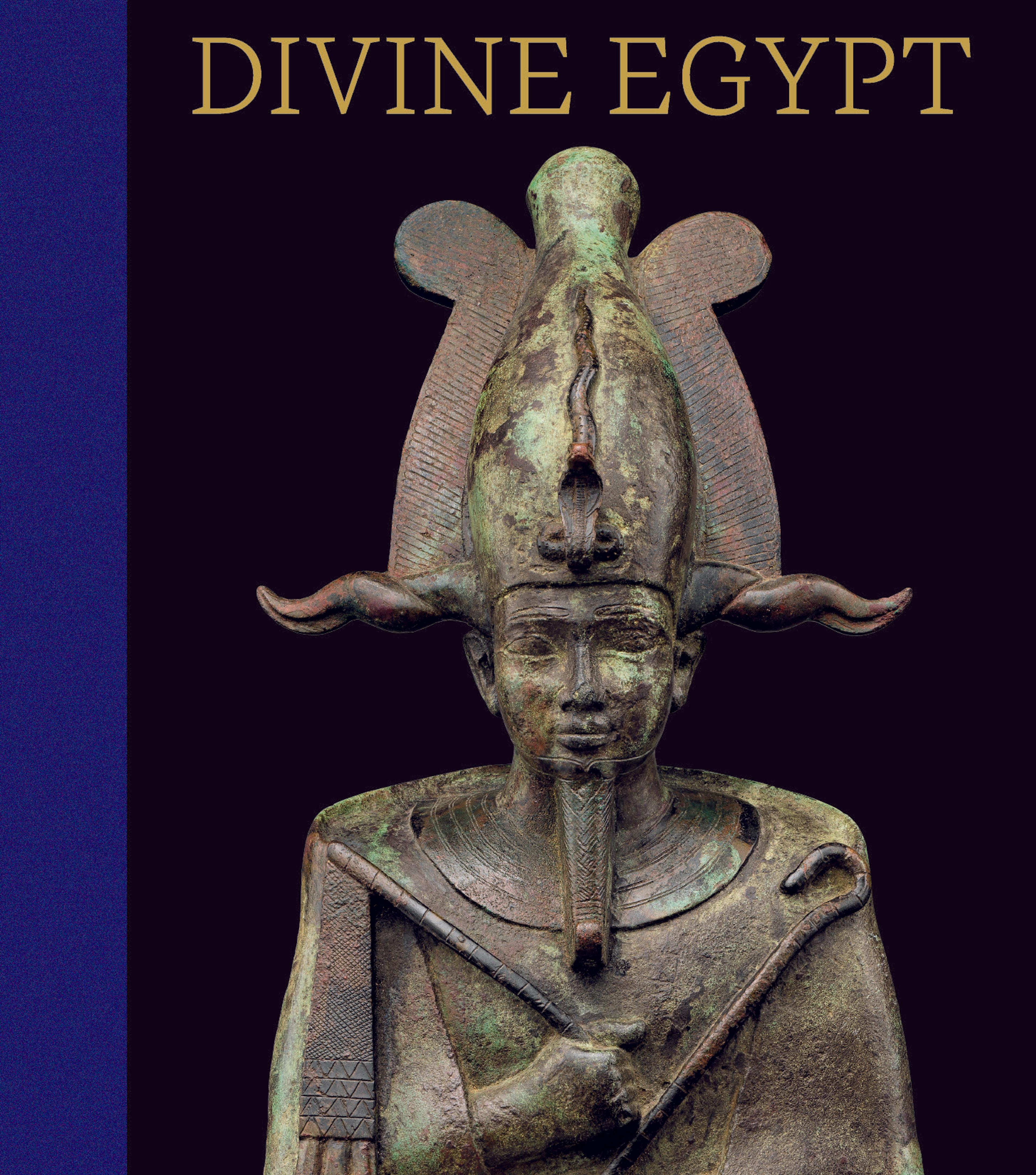The Temple of Dendur
On the outer walls between earth and sky are carved scenes of the king making offerings to deities who hold scepters and the ankh, the symbol of life. The figures are carved in sunk relief. In the brilliant Egyptian sunlight, shadows cast along the figures' edges would have emphasized their outlines. Isis, Osiris, their son Horus, and the other deities are identified by their crowns and the inscriptions beside their figures. These scenes are repeated in two horizontal registers. The king is identified by his regalia and by his names, which appear close to his head in elongated oval shapes called cartouches; many of the cartouches simply read "pharaoh." This king was actually Caesar Augustus of Rome, who, as ruler of Egypt, had himself depicted in the traditional regalia of the pharaoh. Augustus had many temples erected in Egyptian style, honoring Egyptian deities. This small temple, built about 15 B.C., honored the goddess Isis and, beside her, Pedesi and Pihor, deified sons of a local Nubian ruler.
In the first room of the temple, reliefs again show the "pharaoh" praying and offering to the gods, but the relief here is raised from the background so that the figures can be seen easily in the more indirect light. From this room one can look into the temple past the middle room used for offering ceremonies and into the sanctuary of the goddess Isis. The only carvings in these two rooms are around the door frame leading into the sanctuary and on the back wall of the sanctuary, where a relief depicts Pihor worshiping Isis, and below – partly destroyed – Pedesi worshiping Osiris.
Family Guide: The Temple of Dendur
Links to online essays about The Temple of Dendur: Celebrating 50 Years at The Met
A Monumental Gift to the Met
The Temple's Cult and Decoration
Early Representations of the Temple
Cultural Events at the Temple of Dendur
The Temple of Dendur: Architecture and Ritual
The Land of Nubia
Conserving the Temple: A History
Other content related to this temple
Color The Temple: Using Projected Light to Restore Color
The Temple of Dendur: From the Nile to NYC in 360°
Artwork Details
- Title: The Temple of Dendur
- Period: Roman Period
- Reign: reign of Augustus
- Date: completed by 10 B.C.
- Geography: From Nubia, Dendur, West bank of the Nile River
- Medium: Aeolian sandstone
- Dimensions: Temple proper: H. 6.40 m (21 ft.); W. 6.40 m (21 ft.); L. 12.50 m (41 ft.); Gate: H. 8.08 m (26.5 ft.); W. × 3.66 m (12 ft.); D. 3.35 m (11 ft.)
- Credit Line: Given to the United States by Egypt in 1965 and awarded to The Metropolitan Museum of Art in 1967
- Object Number: 68.154
- Curatorial Department: Egyptian Art
Audio
103. Highlights Tour: The Temple of Dendur
Gallery 131
We’ve reached a favorite spot of museum visitors: the Temple of Dendur. The front of the temple is dominated by two columns with floral capitals. This emphasizes an ancient Egyptian idea: a temple represents the world with plants growing from the fertile earth (the temple floor) towards the sky (the temple roof). The walls of the temple and the gate are decorated with reliefs showing the Pharaoh making offerings to deities. The Dendur temple belongs to a late phase of ancient Egyptian architecture. The pharaoh here is actually the Roman Emperor Augustus, because at that time—roughly 2000 years ago—Egypt had become part of the Roman Empire. In its function and appearance, the temple is, however, fully Egyptian.
Unlike religious buildings of modern times, the ancient Egyptian temples were not built as meeting places for people to pray. Instead, they were thought to be the houses of the gods where rituals were performed every day, ideally by the king. In practice, priests served as his substitutes. If you look inside the temple you will see that we placed a statue of a priestess to represent this. In ancient times, statues of the main deities would have been kept inside shrines in the back rooms. But during festivals, ordinary people could encounter the deities when their statues were carried outside onto the terrace overlooking the Nile.
This comparatively small but impressive temple once stood at the bank of the Nile River in Nubia, a region in the very south of Egypt, at a place called Dendur. When the High Dam at Aswan was built in the 1960s, a gigantic artificial lake was expected to flood a large number of ancient monuments. The United States helped to save them from being submerged forever. And Egypt presented this temple—one of the rescued monuments—as a thank-you gift to the American people.
This Museum wing was purposefully built to house the ancient building—so we can experience a real Egyptian temple here in New York.
Listen to more about this artwork
More Artwork
Research Resources
The Met provides unparalleled resources for research and welcomes an international community of students and scholars. The Met's Open Access API is where creators and researchers can connect to the The Met collection. Open Access data and public domain images are available for unrestricted commercial and noncommercial use without permission or fee.
To request images under copyright and other restrictions, please use this Image Request form.
Feedback
We continue to research and examine historical and cultural context for objects in The Met collection. If you have comments or questions about this object record, please contact us using the form below. The Museum looks forward to receiving your comments.
